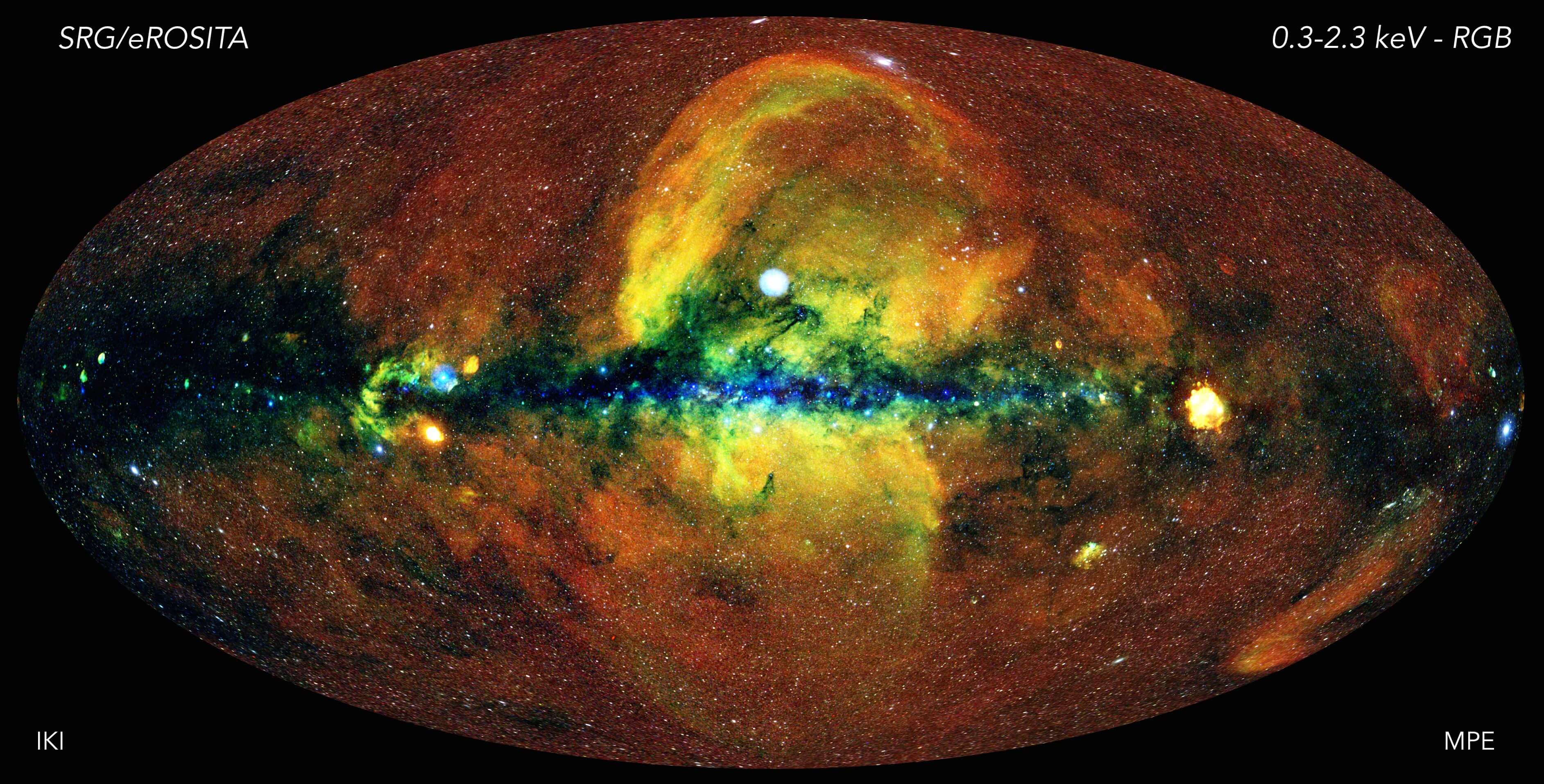
Credit: Jeremy Sanders, Hermann Brunner and the eSASS team (MPE); Eugene Churazov, Marat Gilfanov (on behalf of IKI)
The all-sky map from eROSITA will identify X-ray point sources, whose nature can be discerned by follow-up optical or infrared spectroscopy. Galactic X-ray sources are expected to be coronally active stars, young stellar objects, flare stars, and accreting compact objects.
Cartons
Useful follow-up BOSS or APOGEE spectroscopy requires identifying the correct optical or infrared counterpart. The eROSITA Compact Objects and Stars teams provided the Gaia DR2 or 2MASS IDs cross-matched with an early version of the eROSITA eRASS-1 catalog (publicly released in 2024) for use in targeting generation v0.5.3.
mwm_erosita_stars
The targets were taken from the optical and/or infrared counterparts identified by the eROSITA Stars group from the catalog known internally as EROSITASupersetStars. This catalog was created using the techniques described in Freund et al (2022).
mwm_erosita_compact_gen
The eROSITA compact objects group produced the catalog known internally as EROSITASupersetCompactobjects. Briefly, the catalog was constructed by taking all sources from eROSITA that meet the criteria below, where the following lists relevant definitions:
- p: Gaia DR2 parallax (mas)
- perr: Gaia DR2 parallax error (mas)
- G: Gaia DR2 mean photometric G magnitude
- varproxy = log10(sqrt(phot_g_n_obs/phot_g_mean_flux_over_error)) where phot_g_n_obs and phot_g_mean_flux_over_error are taken from Gaia DR2
- L=-ln(P), where P is the probability that the source is caused by a random background fluctuation
- fx= total X-ray flux from eROSITA
- fopt: flux in the optical, determined by G/2.5 + 4.86
- radec_err: position uncertain in eROSITA position
- pm: the total proper motion (mas/yr)
- pmerr: the total error in proper motion (mas/yr)
- logpmdpm = log10(pm/pmerr)
The selection criteria for counterpart identification are as follows. Bolded conditions below are common to both this carton and to mwm_erosita_compact_var.
- Point source
- G > 16
- L > 8 in at least one of the three eROSITA energy bands.
- Detections in three energy bands
- log(fx/fopt) < 2.7
- Matches a Gaia DR2 source within 30 arcsec AND the source has radec_err > 0 AND angdist/radec_err < 2.1
- Neither of the two following conditions are met:
- (logpmdpm < 0.301) AND (p/perr > -1.4996 * logpmdpm – 4.05) AND (p/perr < 1.4995 * logpmdpm + 4.05)
- (logpmdpm – 0.301)2/0.397942 + (p/perr)2/4.52 ≤ 1
- Closest object with the above criteria
mwm_erosita_compact_var
Because there is often more than one possible compact object counterpart in Gaia, two distinct cartons were generated. This carton uses the bolded conditions in mwm_erosita_compact_gen but additionally calculates a variability index (varproxy, defined below) and selects the counterpart with the largest variability.
- varproxy = log10(sqrt(phot_g_n_obs/phot_g_mean_flux_over_error))
Cadences
The cadence and instrument adopted depend on the Gaia DR2 G and 2MASS PSC H magnitudes.
- H < 13 and G < 13: bright_1x1 with APOGEE
- 13 < G < 17: bright_1x1 with BOSS
- 17 < G < 19: dark_1x2 with BOSS
- G > 19: dark_1x3 with BOSS
